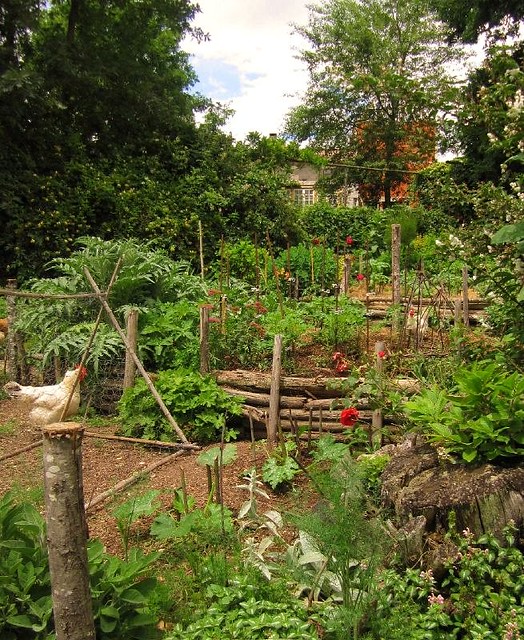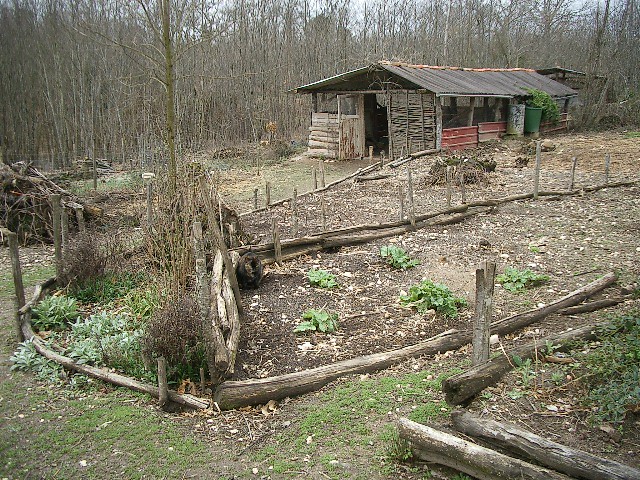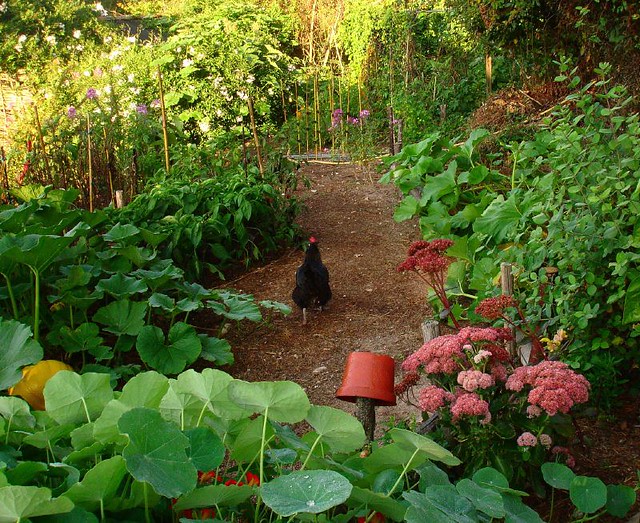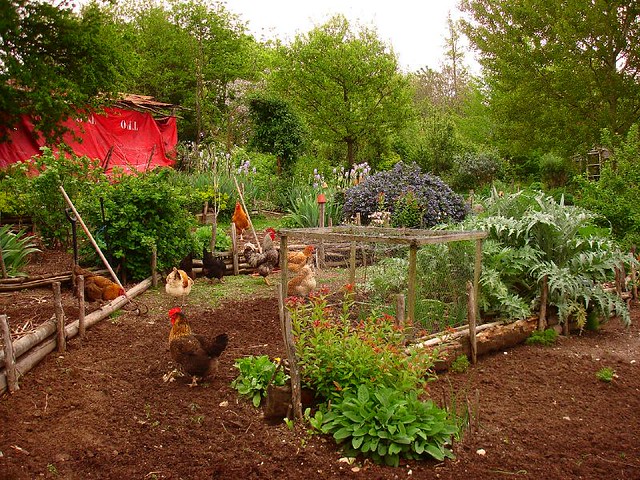The reason I find this lady so interesting is because very little of her property is flat, and almost all her gardens are on hilly/sloped terrain, which is something that I've been concerned about with our land because it is all sloped as well (except for the immediate area around the cabin, which is not enough to base our future food growing spot on).
I worry that my plan of trucking in compost (in order to get up and running quickly) and building borderless raised beds would eventually end in them just washing away with any measure of heavy rain, and even if the beds stayed put, the nutrients would likely end up in the creek, and all would be sad in Mitsy Garden World.
I was opposed to the idea of terracing an entire half acre to acre of future garden space because it sounds A) expensive, B) time consuming, C) potentially difficult to plan and D) way too sophisticated for my taste. We're supposed to be farming here, people! Not building sissy gardens that are all fancy and whatnot.
So through some online conversations with other people in the same predicament, I had concluded that one thing I should focus on is utilizing as much greenery as possible (cover crops, fescues, wildflowers, etc) to make sure that the least amount of soil in my very un-level future raised beds is exposed to the weather and elements, thus helping to ensure that the soil and nutrients stay put for the most part.
But I still worried that this approach would be problematic because it would take time to establish all that greenery. I resolved that if my soil and nutrients started to run down hill and wave my garden sayonara, that I would reconsider terraces. They just seemed so daunting, though. All I could think of were my glossy Sunset magazines with their images of perfect concrete or stacked stone or fancy copper terraces designed by some snobby landscape designer that looked like they were holding up five hundred tons of rock and dirt and being scary and I don't like to think about things falling down and NO.
Then I found Irene on Flickr and thought I should give terraces reconsideration now, not when my beds are washing away. Like, these are working-man terraces. Not fancy-Sunset-scary terraces. I can do this. Let me show you what I'm talking about. I call it "soft terracing" (as opposed to hard, scary terracing). Pictures describe it best:
 |
| Not-scary terracing. [ image credit ] |
 |
| We have lots of downed trees in our woods, which would help make this be not-expensive terracing. [ image credit ] |
 |
| This is what I'm not clear on: how does she access the middle of these beds? Surely she doesn't walk in there. [ image credit ] |
 |
| A winter-time view that shows more structural elements. Not scary at all. [ image credit ] |
 |
| I want to copy this in its entirety. [ image credit ] |
 |
| Chickens in the garden. Whodathunkit. [ image credit ] |
She claims that she lets her chickens actually free range in her garden. In my experience, chickens are pretty much the worst thing to have near any type of greenery, but in hindsight, that might be because I had some of their area covered in gravel pathways, and the few plants I did have certainly did not cover the landscape. My chickens may have been... ahem... bored.
So she lets them free range anywhere they want, they poop all over and spread their fertilizer around through scratching, they keep the paths weed-free, they do eat some plants and fruits (I'm not quite sure how she curbs this behavior, but you could look at it as being a pruning method), she does have to cage off her lettuces and cabbages from being ravished (which you can see in the last picture), and she gets company in the garden to boot.
One of her techniques is to jab sticks in the ground around young seedlings or cover newly seeded areas with some sort of wire barrier to keep the chickens from scratching and dust-bathing, but once a plant is established, she really doesn't give it any protection from them.
I think that I would also be able to incorporate swales into this type of design if they end up being needed for our climate (I'm told by the old codgers that no one irrigates, so I'm not too concerned about this... yet).
I mean, look at her flipping gardens! Everything is lush, beautiful, and tidy but still retains some level of wildness to it. I'm very much a visual person (if that isn't already obvious), and while I can wing it if need be, I prefer lots of reference sources when it comes to this kind of thing. Irene Kightley has been added to my list of permaculture studs.

Raised beds are stepped in to plant and harvest. As long as you are not stepping on the plant you aren't hurting anything. Was born and raised in NC mountains until 15 yrs ago. We had no choice but to have gardens on a hill. No problem soil washing away as we mulched it heavy with straw and manure from the animal stalls. You will see many ways to do things but as you settle in your land you will know what is best for you. Love your place!!!
ReplyDeleteThat's very good to hear, Peggy! I'm probably completely over-dramatizing the issue. Like you said, I think the garden will end up being a mish-mash of many different techniques, methods, and approaches to doing things.
Deleteer
ReplyDeleteer, hi Mom!
Delete